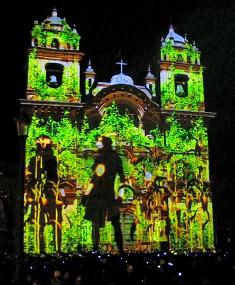“Like other new crafts, we have been compelled to adopt a terminology, which, if somewhat deterrent to the novice, is so necessary a tool to the craftsman that it must be endured. But though these attributes of scientific activity are in evidence, the science itself is still nameless, and we can only describe our pursuit by cumbrous and often misleading periphrasis. To meet this difficulty I suggest for the consideration of this Congress the term Genetics, which sufficiently indicates that our labours are devoted to the elucidation of the phenomena of heredity and variation: in other words, to the physiology of Descent, with implied bearing on the theoretical problems of the evolutionist and the systematist, and application to the practical problems of breeders, whether of animals or plants. After more or less undirected wanderings we have thus a definite aim in view.”
The Wellcome Library celebrates William Bateson‘s 150th birthday a couple of days ago.
 The pretty stunning light show put on in the main square in Cuzco for the 100th anniversary of the re-discovery of Machu Picchu includes something to do with maize at around 5 minutes in. I’ve taken a screen grab (right), but it’s really worth seeing the whole thing. Maybe some expert can tell us what the maize bit represents. Thanks, Charlotte.
The pretty stunning light show put on in the main square in Cuzco for the 100th anniversary of the re-discovery of Machu Picchu includes something to do with maize at around 5 minutes in. I’ve taken a screen grab (right), but it’s really worth seeing the whole thing. Maybe some expert can tell us what the maize bit represents. Thanks, Charlotte.